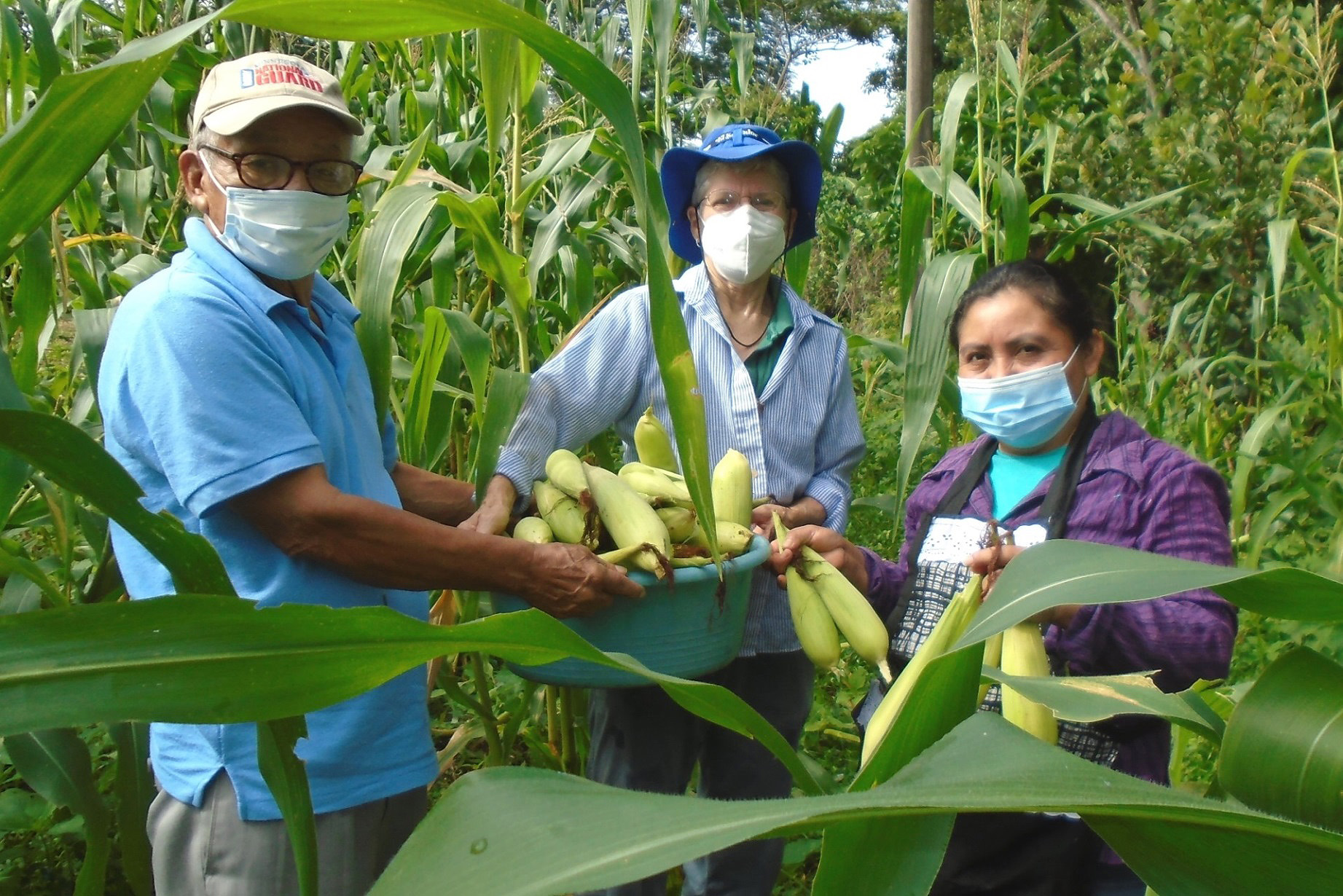
Cándido, Peg and Margarita picking organic corn in the agricultural group’s field in Monte San Juan, El Salvador.
We are now in the “Season of Creation,” which begins Sept. 1 with the World Day of Prayer for the Care of Creation and lasts until Oct. 4, the feast of St. Francis of Assisi. Pope Francis has asked us to join in this ecumenical initiative to “continue to grow in the awareness that we all live in a common home as members of a single family.”
When I share stories and photos of my mission experiences in El Salvador, my friends often respond with comments like “The people look like us!” Or “It reminds me that we are the same all over the world.” “We all basically want and enjoy the same things: food and shelter, a sense of belonging and family, a history, and something to celebrate once in a while.”
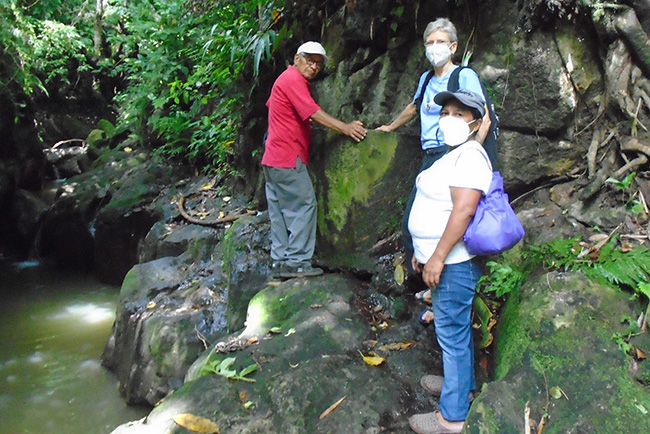
Members of the environment committee of Monte San Juan Parish, Cándido and Peg, with community leader María at a spring feeding the river in watershed.
In this age of globalized instant news and photo sharing, it shouldn’t be that hard for us to realize that we really are a single family of people across the world. But the pope has asked us to adopt St. Francis’ even more radical view that not only the people but all of creation is also part of that same family: the wind and air, the water and fire, and all the plants and animals, too.
Indeed, we all share a common home in this one planet called Earth. The more fully we come to understand that, the more likely we will be to actually take care of this common home.
The theme for this year’s Season of Creation is “A Home for All? Renewing the Oikos of God.” Oikos is the Greek word for home or household, and the idea is to celebrate the integral web of relationships that sustain the well-being of the Earth.
The “home for all” includes the Afghans fleeing from their homes, the Haitians whose homes were destroyed by an earthquake and the people of Louisiana whose homes were damaged by Hurricane Ida. It includes people like my neighbor, who left his home and family a few months ago to try and earn a better income and now works and waits in Mexico for the opportunity to go to the U.S., and the far too many currently calling a hospital home as they seek treatment for COVID-19. But it also includes the up to 1 million species of plants and animals that are threatened with total extinction due to the actions of human beings on the planet (see this UN report).
All has only three letters, but it is a very big word. Trying to see how everything is interconnected can be overwhelmingly complex, so it’s sometimes easier to focus on one small piece at a time — like my little corner of the world.
As a Maryknoll lay missioner in El Salvador, I am involved with agricultural and environmental issues but also the relationships with and among the people with whom I live and work and our environment. The group of farm families who originally wanted to learn more about food security and producing more and better-quality food have come to realize how necessary both the bees and other pollinators that fly in the air and the microorganisms that live in the soil are for sustainable production. They now know how important soil and water conservation practices are for becoming more resilient to changing climate patterns, how selecting resistant plants and saving their own seed can improve their crops’ ability to withstand storms, drought and pests, and how working together is more productive and more fun than working alone!
No one in our group has felt the need to migrate to look for better opportunities elsewhere.
People in this rural community are becoming more aware of the precarious nature of water availability, the enormity of the problem of solid waste and the undesirable consequences of unplanned growth.
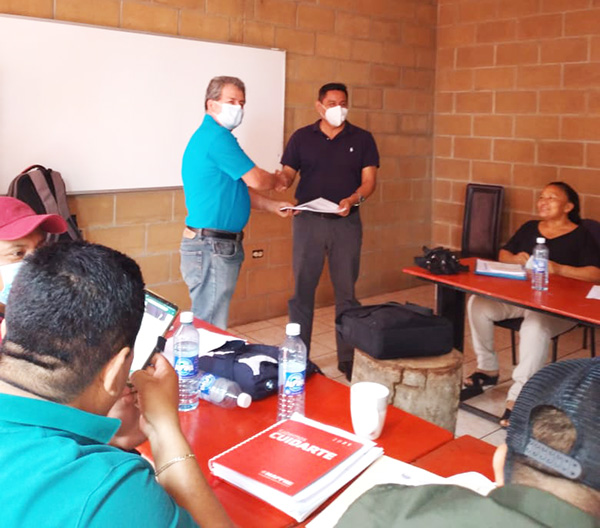
Our parish environment committee presents the watershed plan to the mayor of Monte San Juan.
Our Monte San Juan Parish’s environmental committee has been an integral player in the development of a watershed management plan for one of the rivers that flows through four towns in our area. We are starting to implement parts of the plan while learning how to be patient yet insistent with local and national government to confront the water resource crisis that we are facing.
We continue to remind parishioners about living the 3 R’s — reducing, reusing and recycling (try living with your garbage for a few days to see just how much we need to decrease the amount of trash each one of us generates). We engage with local authorities on solid waste management alternatives. And we encourage our local elected officials to formulate thoughtful policies to protect and preserve the natural environment and the cultural identity of the community as it embraces future growth and development.
Just in one small community, the web of relationships between the flora and fauna, the climate, the infrastructure, the social/political/economic culture and all the amazing personalities of each individual person make a complex oikos or home. It functions like many others around the world: sometimes well and sometimes with difficulties.
As we try to become more aware of and understand that web, we begin to see how each part is essential and interconnected and can therefore try to foster its renewal and sustain its well-being. How it fits into the larger community of communities takes us to the next level of analysis, and that’s where we are all called to work together.
Pope Francis says in his encyclical Laudato Si’, “There has been a growing conviction that our planet is a homeland and that humanity is one people living in a common home. An interdependent world not only makes us more conscious of the negative effects of certain lifestyles and models of production and consumption, which affect us all; more importantly, it motivates us to ensure that solutions are proposed from a global perspective, and not simply to defend the interests of a few countries” (164).
I invite all of us to take some time in this Season of Creation to pray about, to analyze and to take appropriate action on our own webs of existence to make them more sustainable, and then try to see the bigger picture as well.
Photos by Peg Vámosy
Click on the photos to view full size.
Members of the agricultural group marking a contour line with simple A frame for soil and water conservation.
Members of the agricultural group mix microorganisms in organic matter to make a soil amendment, Monte San Juan.
Parish environment group and community leaders in San Nicolás village discuss watershed problems after visit to the river.

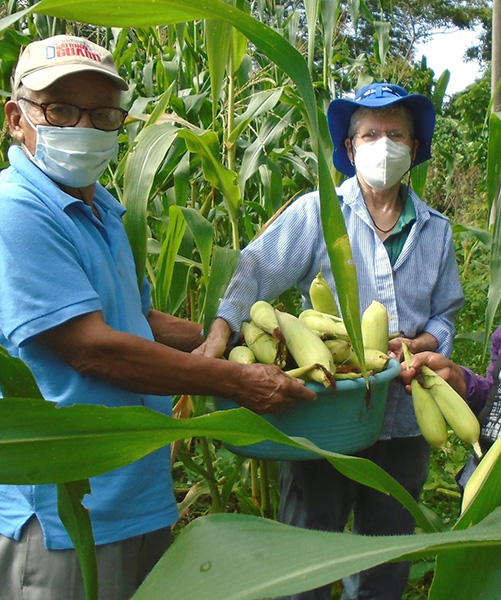
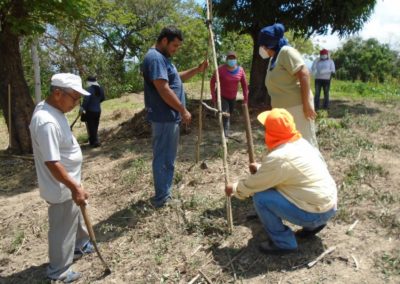
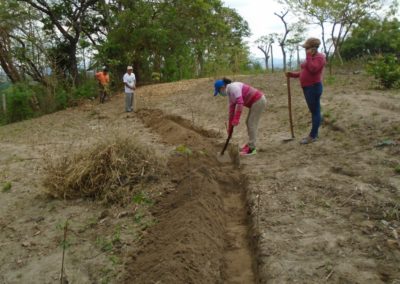
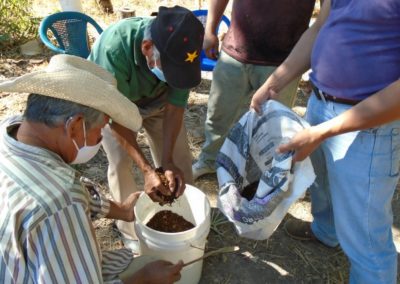
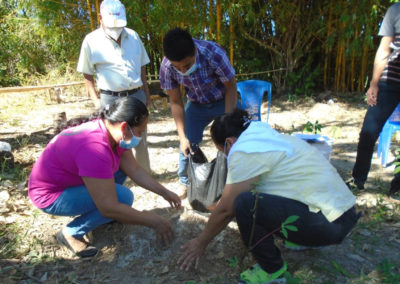
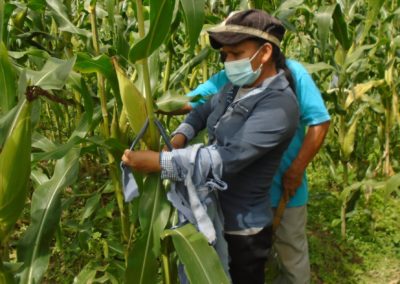
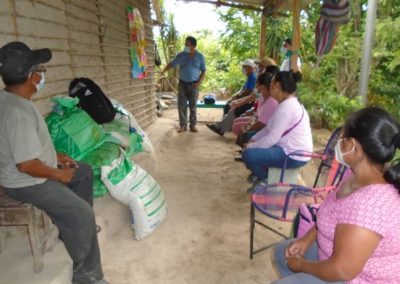
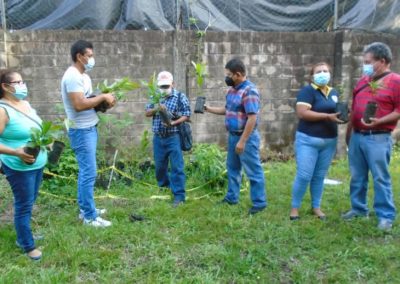
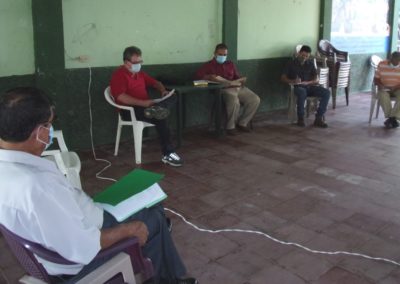

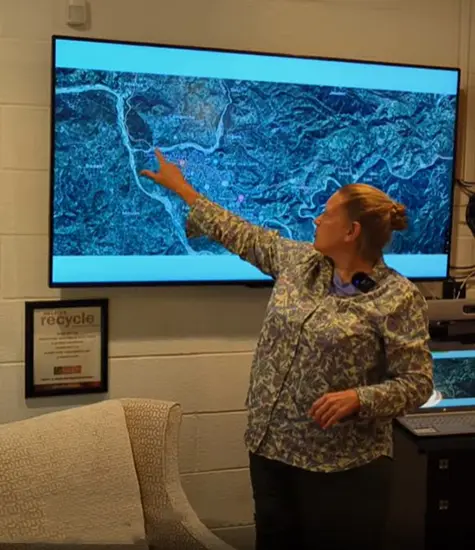
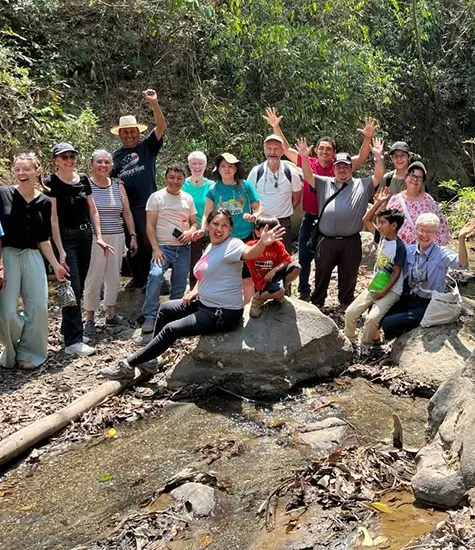
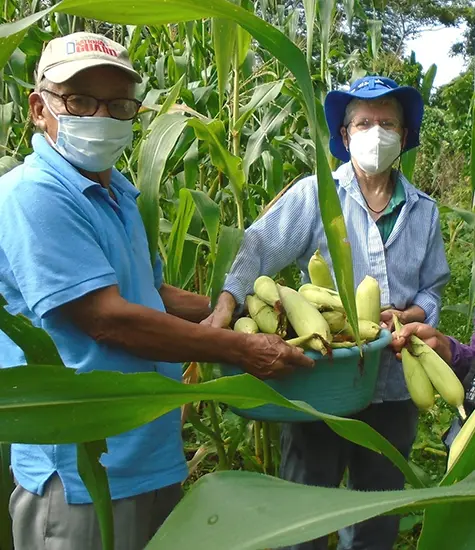




This is so great and heart warming
Good to hear of progress by those in El Salvador caring for our common home in their “little corner of the world.” I plead with those of us living a high-carbon-footprint lifestyle in our “little corner of the world” to answer the call-to-action for prompt and significant reduction of our carbon footprint. Our planet is calling us to do so. Our Christian leaders have issued a joint appeal, https://www.vatican.va/content/francesco/en/messages/pont-messages/2021/documents/20210901-messaggio-protezionedelcreato.html, calling us to do so – to examine our behavior and pledge meaningful sacrifices for the sake of the earth which God has given us. Let us all answer and tenaciously promote the following call-to-action.
Sea levels were 78 feet higher and temperatures were 5°F warmer, when, 3.6 million years ago, CO2 concentration last reached our current level of 420 ppm. We need to promptly reduce our CO2 emissions to the sustainable level of 3 tons/person/year (current emissions: global 4.5, USA 17.5). Tenaciously spread the Less Now, More Later message. Now, embrace a Less lifestyle – less heating and cooling (GreenBetween 55°F to 85°F, https://greenbetween.home.blog/), less driving, less flying, less meat-eating, less procreation (2 children max). Later, we can embrace a More lifestyle made carbon-free by implementation of green technology and infrastructure. In addition to your share of the common footprint, what’s in your carbon footprint? 7 tons for heating your home above 55°F? 4 tons for driving 12,000 miles at 29 miles per gallon? 2 tons for flying 10,000 miles? 1 ton for eating one serving of beef each day?…
I plead with Maryknoll Lay Missioners to use their “bully pulpit” to tenaciously promote the above call-to-action.
We traveled in El Salvador with Peg and other Maryknoll lay missioners as members of a group of JustFaith Ministries participants in a Friends Across the Borders immersion trip. Peg had just arrived in-country and had not discerned her mission location. It is inspiring to read about what she and the Monte San Juan parish have accomplished in 9 years. May our U.S. parishes be so inspired to respond in ways that recognize the need to care for the Earth.